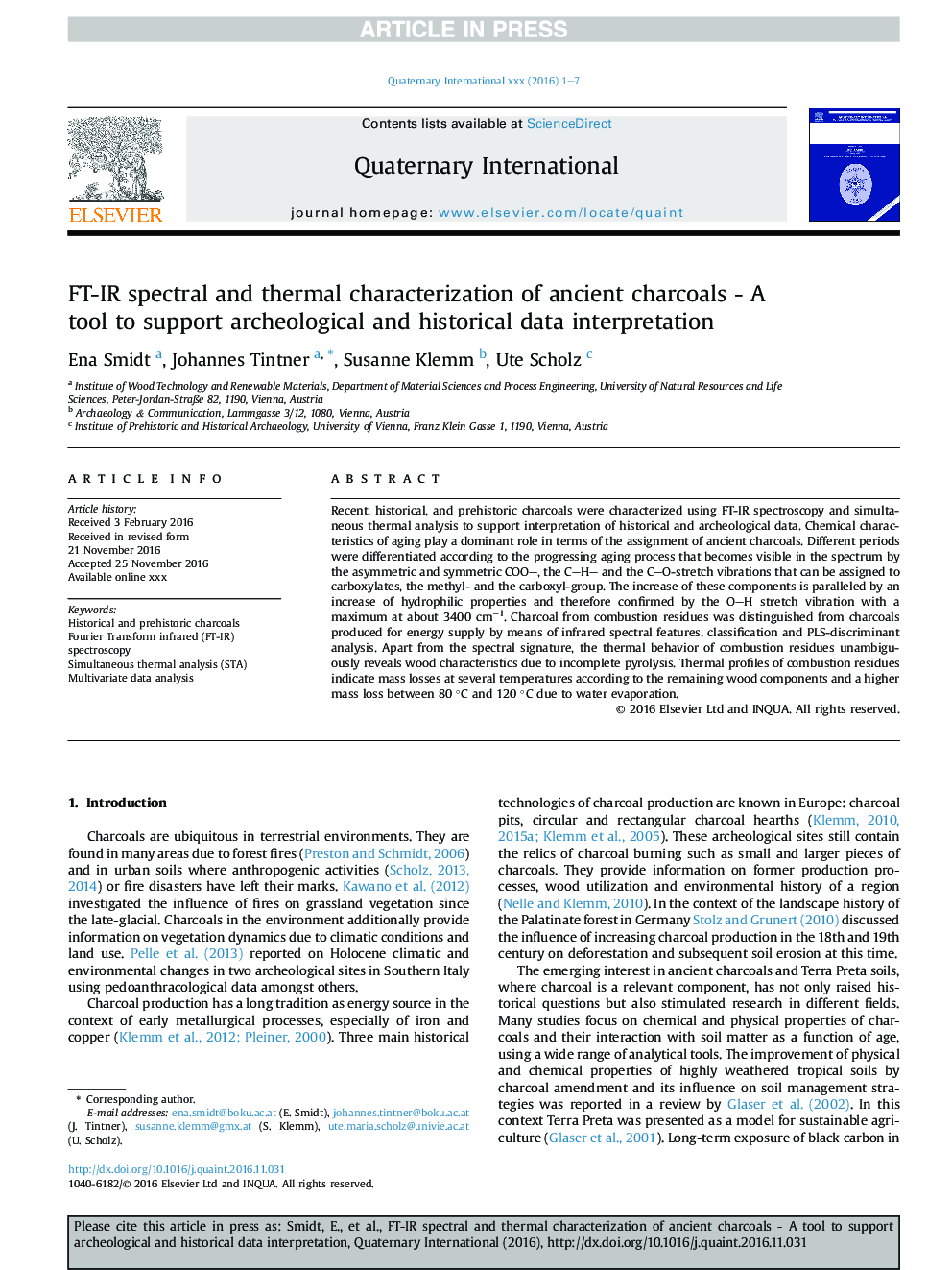| Article ID | Journal | Published Year | Pages | File Type |
|---|---|---|---|---|
| 7451226 | Quaternary International | 2017 | 7 Pages |
Abstract
Recent, historical, and prehistoric charcoals were characterized using FT-IR spectroscopy and simultaneous thermal analysis to support interpretation of historical and archeological data. Chemical characteristics of aging play a dominant role in terms of the assignment of ancient charcoals. Different periods were differentiated according to the progressing aging process that becomes visible in the spectrum by the asymmetric and symmetric COO, the CH and the CO-stretch vibrations that can be assigned to carboxylates, the methyl- and the carboxyl-group. The increase of these components is paralleled by an increase of hydrophilic properties and therefore confirmed by the OH stretch vibration with a maximum at about 3400 cmâ1. Charcoal from combustion residues was distinguished from charcoals produced for energy supply by means of infrared spectral features, classification and PLS-discriminant analysis. Apart from the spectral signature, the thermal behavior of combustion residues unambiguously reveals wood characteristics due to incomplete pyrolysis. Thermal profiles of combustion residues indicate mass losses at several temperatures according to the remaining wood components and a higher mass loss between 80 °C and 120 °C due to water evaporation.
Related Topics
Physical Sciences and Engineering
Earth and Planetary Sciences
Geology
Authors
Ena Smidt, Johannes Tintner, Susanne Klemm, Ute Scholz,
